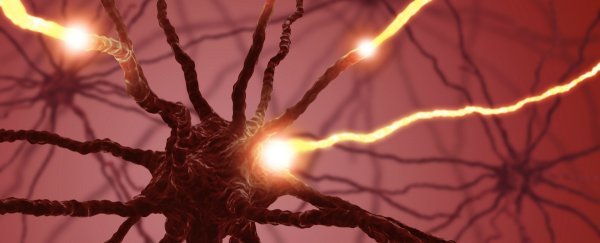Researchers have found a gene that links the three previously unrelated biological changes most commonly blamed for causing schizophrenia, making it one of the most promising culprits for the disease so far, and a good target for future treatments.
Schizophrenia is a debilitating mental disorder that usually appears in late adolescence, and changes the way people think, act and perceive reality. For decades, scientists have struggled to work out what causes the hallucinations and strange behaviour associated with the disorder, and keep coming back to three neuronal changes that seem to be to blame. The only problem is that the changes seemed to be unrelated, and, in some cases, even contradictory.
But now, researchers from Duke University in the US have managed to find a link between these three hypotheses, and have shown that all three changes can be brought about by a malfunction in the same gene.
Publishing in Nature Neuroscience, the researchers explain that their results could lead to new treatment strategies that target the underlying cause of the disease, rather than the visible changes or phenotypes, associated with schizophrenia.
"The most exciting part was when all the pieces of the puzzle fell together," lead researcher, Scott Soderling, a professor of cell biology and neurobiology from Duke University, said in a press release. "When [co-researcher Il Hwan Kim] and I finally realised that these three outwardly unrelated phenotypes … were actually functionally interrelated with each other, that was really surprising and also very exciting for us."
So what are these three phenotypes? The first is spine pruning, which means that the neurons of people with schizophrenia have fewer spines - the long part of a brain cell that passes signals back and forth. Some people with schizophrenia also have hyperactive neurons, and excess dopamine production.
But these changes just didn't seem to make sense together. After all, how could neurons be overactive if they didn't have enough dendritic spines to pass messages back and forth, and why would either of these symptoms trigger excess dopamine production? Now, researchers believe that a mutation in the gene Arp2/3 may be to blame.
Soderling and his team originally spotted the gene during previous studies, which identified thousands of genes linked to schizophrenia. But Arp2/3 was of particular interest, as it controls the formation of synapses, or links, between neurons.
To test its effect, the researchers engineered mice that didn't have the Arp2/3 gene and, surprisingly, found that they behaved very similarly to humans with schizophrenia. The mice also got worse with age and improved slightly with antipsychotic medications, both traits of human schizophrenia.
But most fascinating was the fact that the mice also had all three of the unrelated brain changes - fewer dendritic spines, overactive neurons and excess dopamine production.
They also took things one step further and showed, for the first time, that this lack of dendritic spines can actually trigger hyperactive neurons. This is because the mice's brain cells rewire themselves to bypass these spines, effectively skipping the 'filter' that usually keeps their activity in check.
They also showed that these overactive neurons at the front of the brain were then stimulating other neurons to dump out dopamine.
"Overall, the combined results reveal how three separate pathologies, at the tiniest molecular level, can converge and fuel a psychiatric disorder," Susan Scutti explains over at Medical Daily.
The group will now study the role Arp2/3 plays in different parts of the brain, and how its linked to other schizophrenia symptoms. The research is still in its very early stages, and obviously has only been demonstrated in mice and not humans. But it's a promising first step towards understanding this mysterious disease.
"We're very excited about using this type of approach, where we can genetically rescue Arp2/3 function in different brain regions and normalise behaviours," Soderling said. "We'd like to use that as a basis for mapping out the neural circuitry and defects that also drive these other behaviours."
